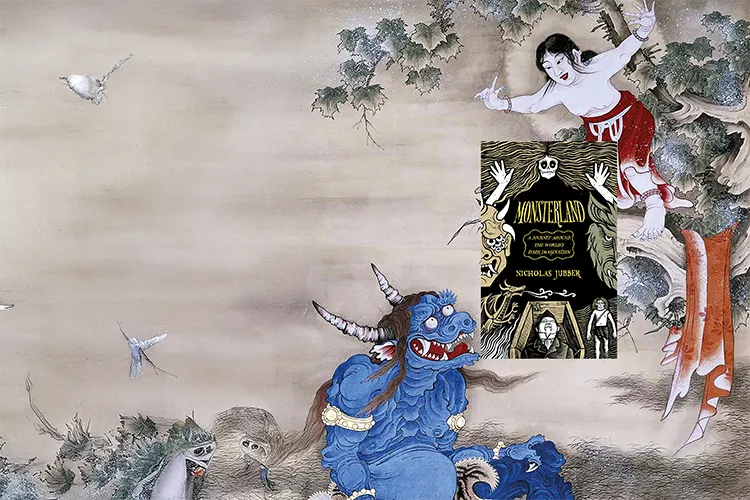
In Monsterland, Nicholas Jubber explores mythical creatures across continents – from UK legends to Japanese folklore – revealing how monsters mirror humanity’s deepest anxieties and cultural landscapes
By Shafik Meghji
Monsters have always been with us. Around 40,000 years ago, one of our ancestors in what is now southern Germany carved the fearsome figure of the Löwenmensch, or Lion-man, from the tusk of a mammoth. In the Epic of Gilgamesh – perhaps the oldest surviving work of literature, dating back 4,000 years – the eponymous king from Mesopotamia battles wild men, forest-dwelling giants and mythical beasts. And sometimes we discover that the real danger lies within. ‘Beware that when fighting monsters you yourself do not become a monster,’ wrote philosopher Friedrich Nietzsche in Beyond Good and Evil. ‘For when you gaze long into the abyss, the abyss gazes also into you.’
In his captivating new book Monsterland, award-winning travel writer Nicholas Jubber shows how monsters are central to the human condition, representing hostile environments, wild places and tormented psyches. As well as serving as fractured mirrors for humankind and providing obstacles for our heroes to overcome, they are frequently projected onto other people, communities, faiths and lifestyles. And through fear or malice – or a combination of the two – we sometimes will them into existence.
Jubber – whose last book, The Fairy Tellers, explored the history behind both famous and long-forgotten fairy stories – divides monsters into: ‘The wild, the shapeshifters, the undead, and the monsters of the modern imagination. Four categories with one thing in common: their ability to terrify.’ With wit and flair, he travels across the UK, Japan, Morocco, Germany, Mexico, the United States and beyond to explore their origin stories, multiplicity of meanings and enduring contemporary resonance.
Giants, for example, are often a ‘folkloric shorthand for millions of years of geological processes’, a means of understanding how the world around us was formed. In Cornwall, Jubber learns about the behemoth Bolster, whose age-old story is indelibly linked to the region’s granite landscape, while also serving as an allegory for overcoming oppression. The giant lives on in a patchwork of festivals, folk songs and fairy tales, entwined with local identities, languages and political expression.
Monsterland is packed with memorable descriptions and insightful context on stories ranging from Haitian zombies to Balkan vampires. On the slopes overlooking Kyoto, Jubber searches for the villainous Shutendoji, an ogre-like monster known as an oni. As well as drawing upon Buddhist imagery, these creatures are metaphors for the perils of the natural world – a resonant issue in a country as prone to earthquakes, volcanoes, typhoons and tsunamis as Japan. In Bavaria, there are dragons – representing intensified versions of wild beasts such as reptiles, bats and birds of prey – and their slayers. Meanwhile, in Morocco, mischievous, capricious, troublemaking and, occasionally, benevolent jinn stalk dreams and possess bodies. And in Mexico, the ghostly Llorona functions as an ambiguous ‘symbol for grief, sexual betrayal, and the culture that was pulverised’ by the Spanish conquistadors.
The section on selkies – which shapeshift between seal and human forms – is particularly enlightening. In Orkney, a ‘land in which the past is ever present’, these creatures were considered cousins of the islanders. If you were born with webbed feet, you had a selkie in the bloodline, according to legend. Yet these shapeshifters were, perhaps, also a way of understanding and representing neurodivergence and mental health issues.
Today, it feels as if monsters are swarming all around us – in films, TV and books, in the climate and our technology, on social media and in political office. But as Jubber deftly highlights, most monsters, however powerful or malevolent they may appear, are ultimately vanquished, banished or slain. A useful thing to remember in these uncertain times.




